The life of a mother and the life of an artist are often depicted at odds. But the five artist-mothers assembled here offer a valuable counter-narrative. Motherhood, they say, has made them better artists, and their artistic work has made them better mothers. Inhabiting the two roles makes them more observant, efficient, open-minded, and ambitious.
“I have always thought of art-making as an act of love, and there is no greater love than being a mother—the ripples get larger and larger,” says the 79-year-old artist Lita Albuquerque, who is both a mother and a grandmother. “I realized the more I took on, the more I could take on.”
Ahead of Mother’s Day, CULTURED asked a variety of artists from multiple generations to reflect on how these equally demanding and animating roles have shaped their work and their lives.
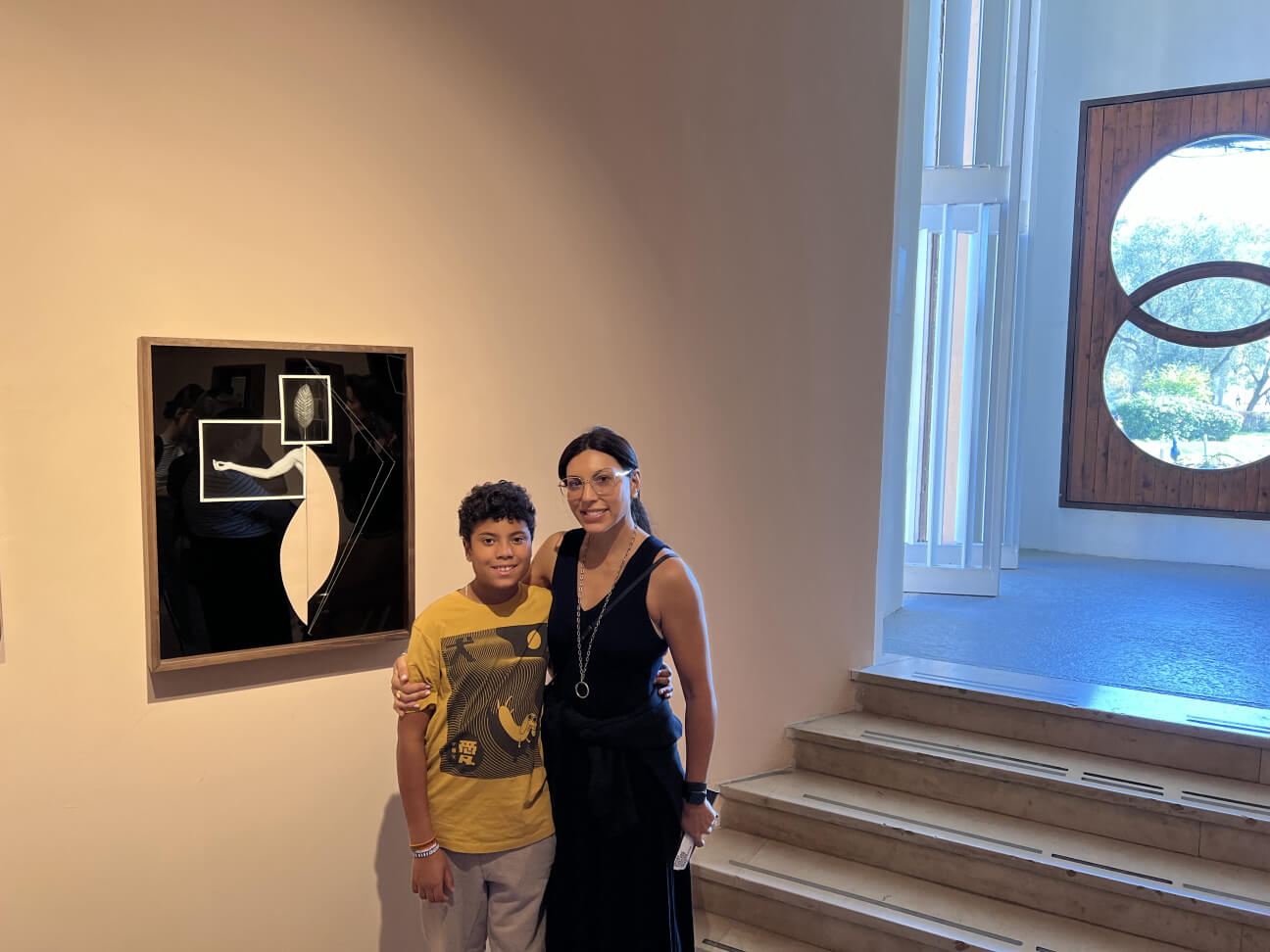
Sheree Hovsepian
How has being a mother informed your art practice in unexpected ways?
Becoming a mother has changed my relationship to time, in particular unstructured time. When Julius was a baby and I had a limited amount of childcare per week, I began making photograms, which is a darkroom process that can be done relatively quickly. I found myself becoming much more efficient, not just in how I worked, but in how I trusted my intuition. Parenthood introduced a new sense of urgency in places, such as my studio practice, but was also a lesson in patience. I began to appreciate slowing down and putting my lists on hold to read Goodnight, Goodnight Construction Site to my son five times in a row.
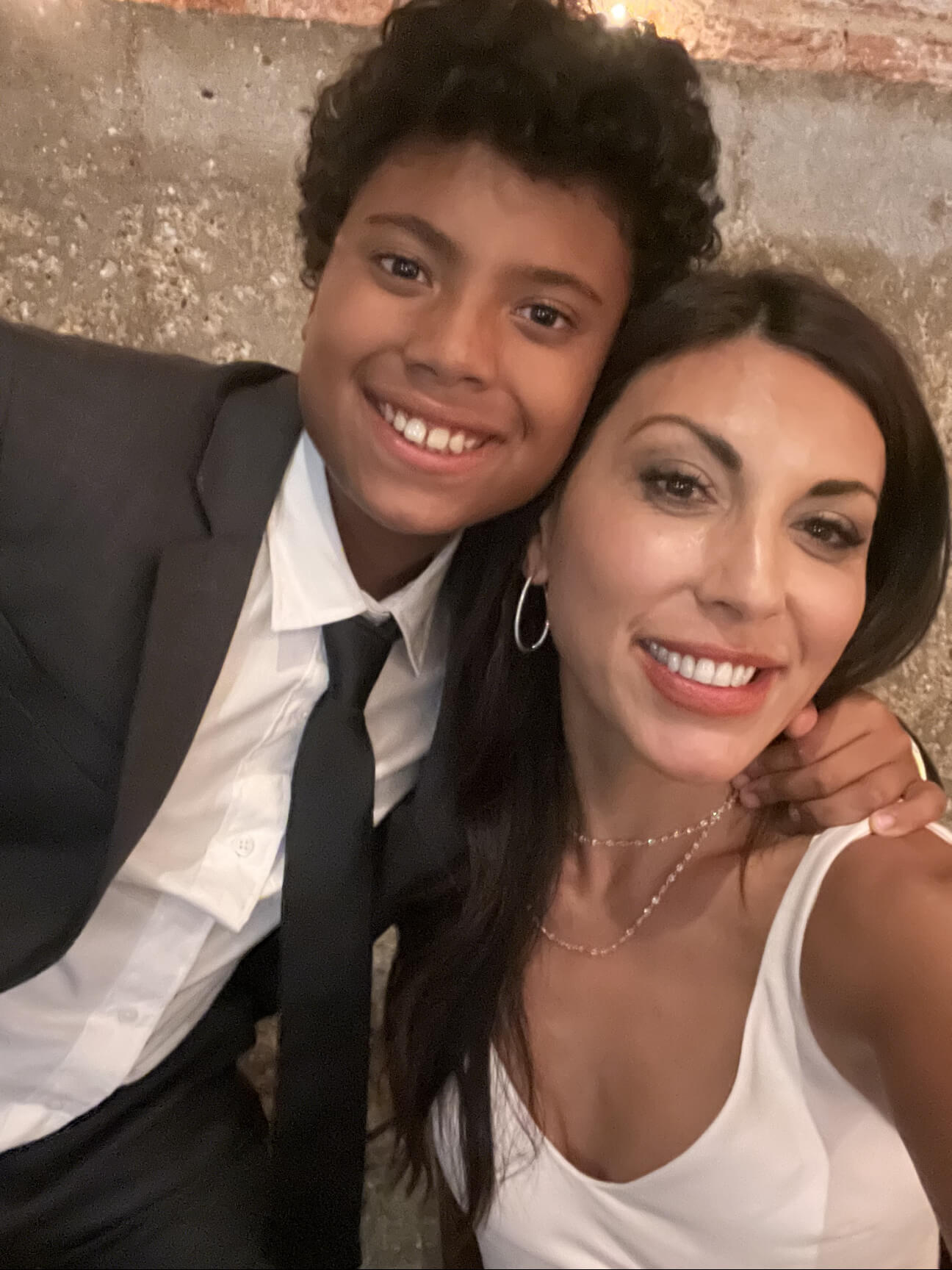
How have you handled the delicate balance of being a working mother?
To balance life and work is a real art. I learned it is less about being perfect and more to do with being present wherever I am, whether with my child or the studio. There is a lot of unseen labor that underpins motherhood and I have to remember to give myself grace if I can’t be a perfect mother or artist. Self-care is essential as well. In my home, I am the nurturer. It is important to remember that caretakers need care too.
What are your most treasured rituals?
I do mornings with my son every day. These days, I don’t do school drop off anymore, as he is 13 and has a short walk to school. Now, I make him a breakfast of toast, green apples, and a (weak) cappuccino. I sit with him as we both have our coffee and I ask him questions and try to make him talk to me before he leaves for school. Sometimes, I just sit there and look at him until it’s time for him to go.
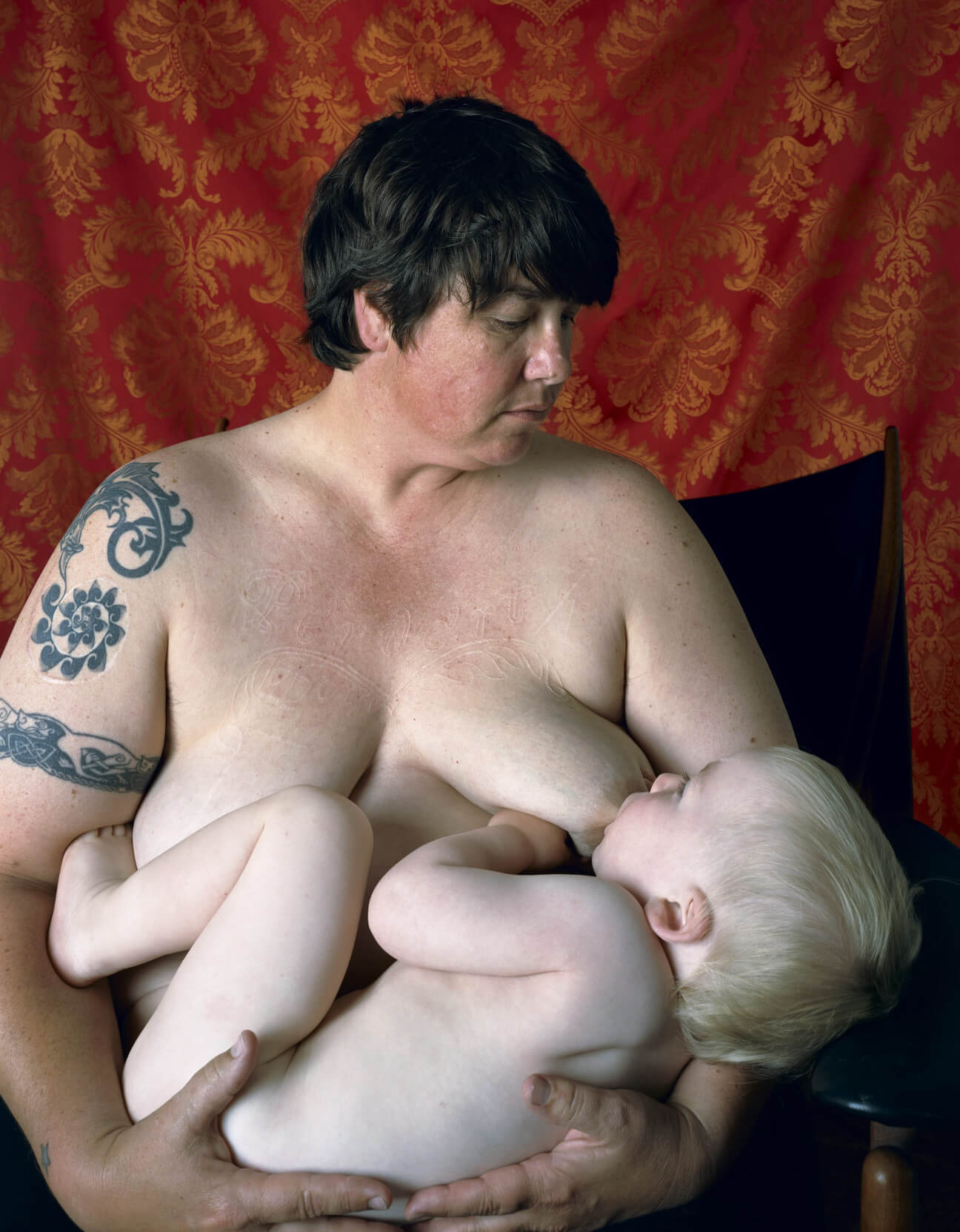
Catherine Opie
How has being a mother informed your art practice in unexpected ways?
One of the things that I didn’t realize about being a mother is that I would want to make a couple of images that would be part of my history with my child. I really wanted him to be autonomous from a mother who bears witness constantly as a photographer, but I realized that becoming a mother was one of the most monumental moments in my life.
Has seeing art through your child’s eyes changed any of your long held opinions?
My child, unlike other children of art-world people, has decided to be an art historian. One of the things I got to learn about through his eyes was a really deep love of the history of Asian art. Now, when we wander museums together, we have the most amazing conversations about history and culture and how art informs us. It’s more than I ever dreamt of, as an artist, to have a kid that really values and loves art as much as I do.
How have you handled the delicate balance of being a working mother?
You handle it because you are a working person. This idea of working mothers needs to become not part of the discourse. We don’t go on about working fathers. We also don’t go on about fathers who choose to stay home and be the caretakers of their families. We need to talk about what it is to value children and what it is to value the relationship to being a working parent. There has never been a time in which mothers haven’t worked.
What are the lessons you learned from your mother that you hope to also impart to your child?
My mom was a PE teacher, and she really valued physical fitness and health. I really try to incorporate that in my life and my child’s life in different ways. I wanted a little boy who rode a bike and a skateboard, and I had all these ideas about what it was to have a boy that was adventurous in that way. My son was not that type of adventurous, so I had to learn how to value what fencing or other sports meant. My mom really taught me how to play as a child, and I really spent a lot of time making sure I played with Oliver.
What are your most treasured rituals?
My most treasured rituals are around the holidays, to be honest. I’m a huge Christmas mom. I get so excited about finding the perfect gifts all year round as I travel. I love cooking the big Thanksgiving. I still treasure just cuddling up and watching a movie and just being close to him and the daily conversations that I have with my young adult son that just open up my world in all of these different ways. Even though I taught for many years, it’s different when it’s your child—you have a different kind of intimacy and closeness that is just beyond special.
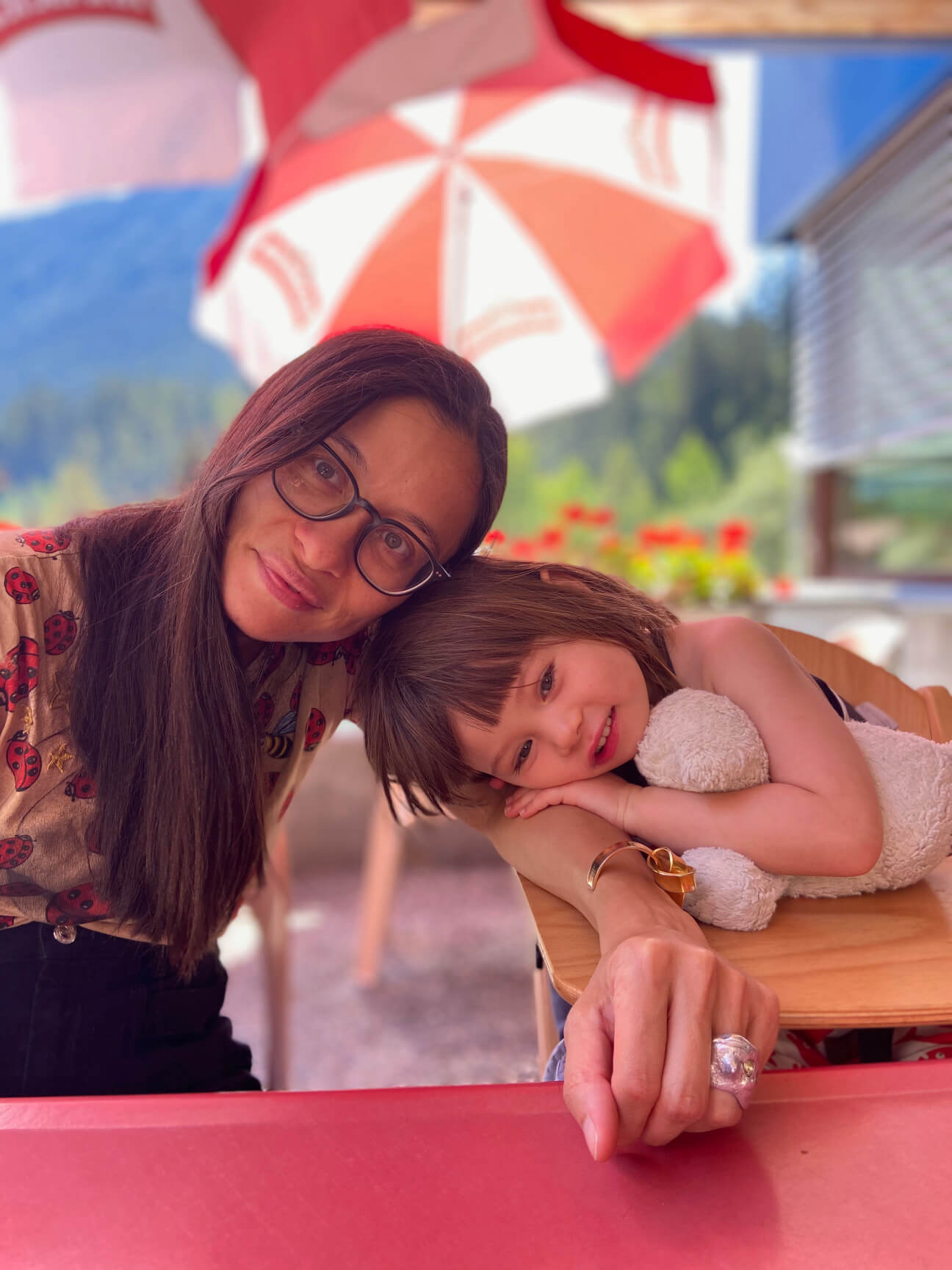
Mai-Thu Perret
How has being a mother informed your art practice in unexpected ways?
Becoming a mother has made me aware of how underrepresented motherhood and pregnancy have been in the art historical canon, and it’s made me want to address it in my work. It also confirmed something I already knew on a very instinctive level—that art is a bodily experience as much as a visual one, and that we touch with our eyes.
Has seeing art through your child’s eyes changed any of your long-held opinions?
I’m not sure if it has anything to do with her eyes, but I’ve generally become much more open to expressionism and a more impressionistic, sensitive approach to art-making since I’ve had my daughter. And she’s definitely opened the floodgates in terms of the representations of animals. I’m always surprised by what she likes and doesn’t like; her opinions are very clear, very sharp. And I think she’s helped me trust my intuition even more.

How have you handled the delicate balance of being a working mother?
It’s not been subtle at all! In many ways being a working mother is an impossible proposition, you never have enough time for everything. It’s definitely forced me to learn to say no. I’ve learned to be much more organized, to stick to schedules that fit those of daycare and schools, which has been quite hard for someone who loved to work at night or in the evening. Now I’ve become completely unable to do it, it’s almost a physiological change.
What are the lessons you learned from your mother that you hope to also impart to your child?
To trust yourself. To not let other people define what you are capable of. My mother has always been a very self-confident person, and I hope my daughter can inherit this strength.
What are your most treasured rituals?
Cooking together, bedtime stories, and playing with our cats.
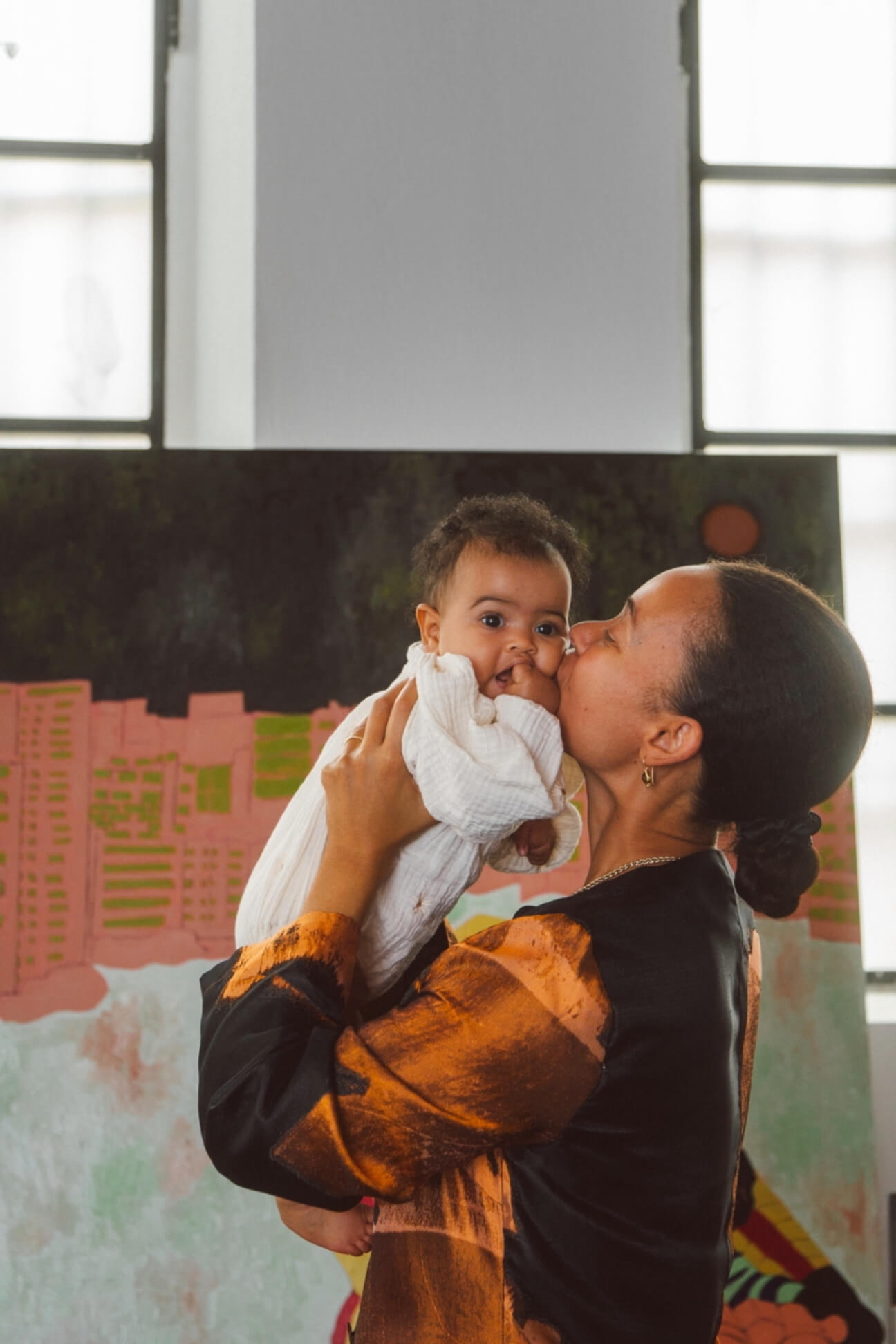
How has being a mother informed your art practice in unexpected ways?
When my daughter was born, I spent a lot of time just observing her uninterrupted—just me, my new attention, and my baby. I learned every gesture which made me a semi-confident new mother. This new sensing was then naturally occurring in my work and life; I feel I am a better painter now.
Has seeing art through your child’s eyes changed any of your long-held opinions?
It’s confirmed my relationship to color and balance—she’s very attuned to this.
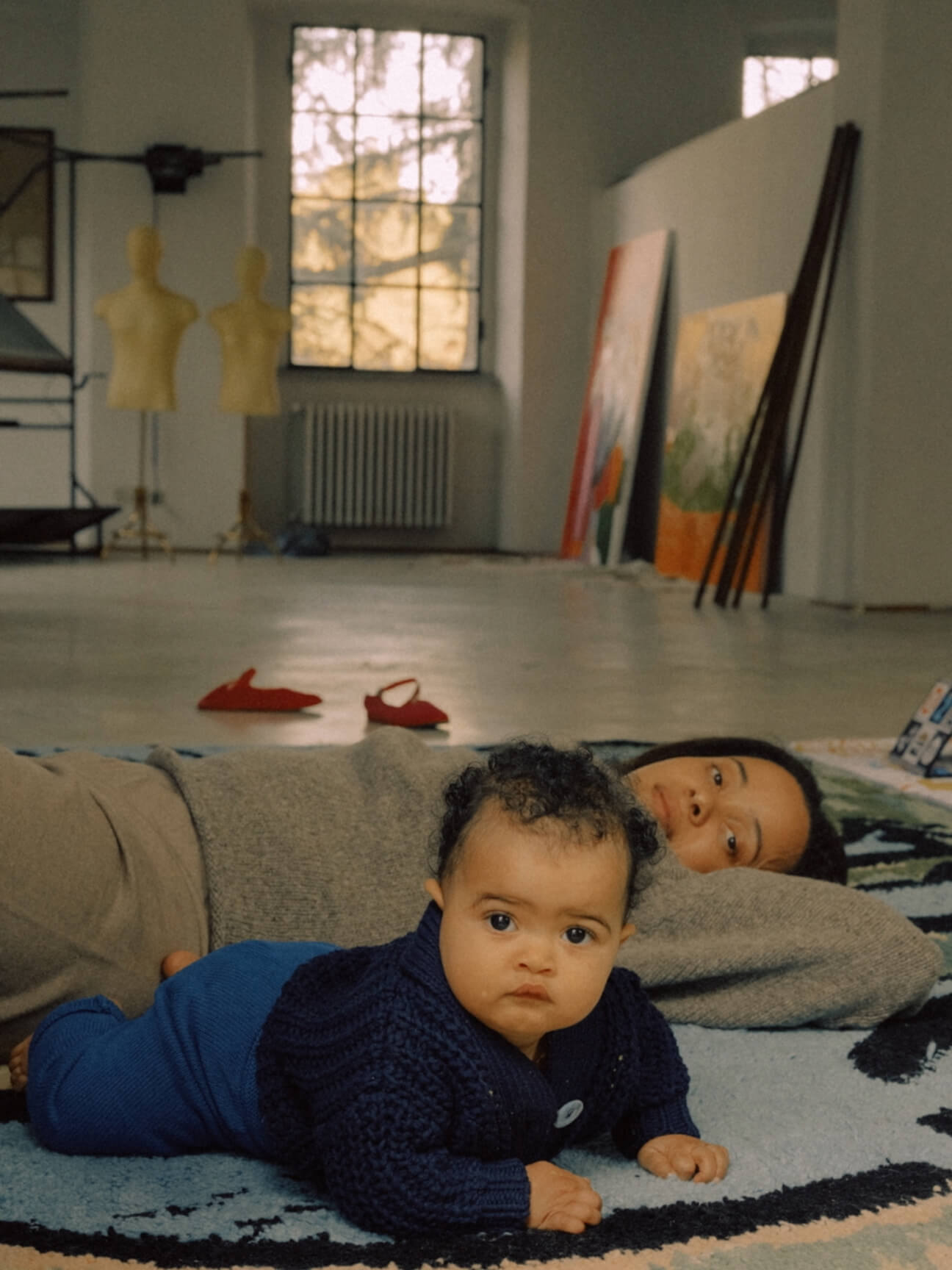
How have you handled the delicate balance of being a working mother?
I’m still navigating it as every week she’s a different version of herself.
What are the lessons you learned from your mother that you hope to also impart to your child?
How to dress oneself. The art of personality and individuality.
What are your most treasured rituals?
A good bathing routine.
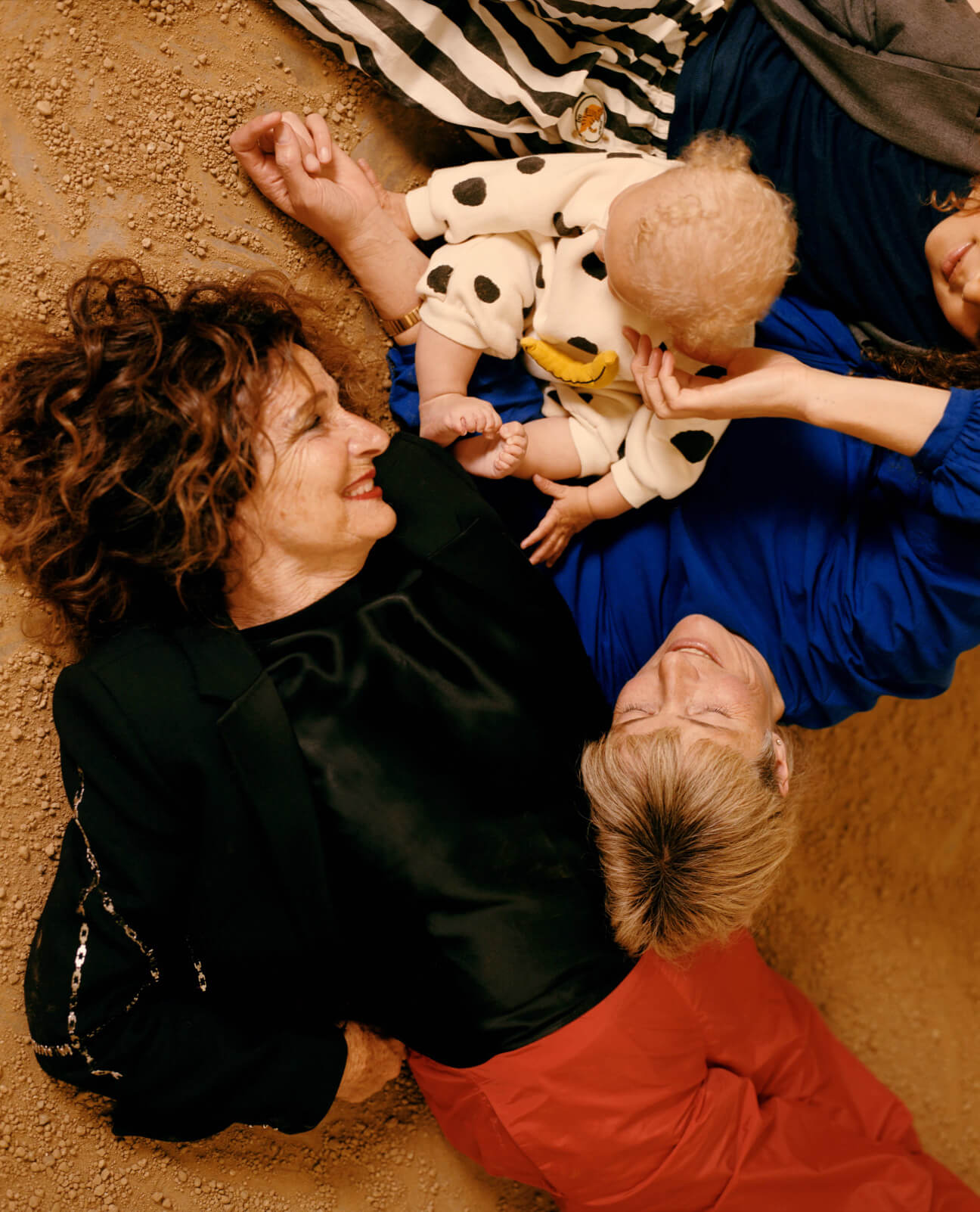
How has being a mother informed your art practice in unexpected ways?
Art informed my desire to be a mother and being a mother informed my practice. I was working on a series, “Desire and Memory,” 1977, [when] I realized how much I had been suppressing the idea of becoming a mother. The work itself revealed my own desire to me. I have always thought of art-making as an act of love, and there is no greater love than being a mother. The ripples get larger and larger—they are infinite. The more my responsibilities and children grew and stretched me, the more I stretched.
Having children continues to add larger ripples to my life, and they all [have become] part of my work as well. Isabelle for a long time was a collaborative thinker and studio assistant to me. Chris often researched and wrote alongside me and accompanied me in my project related travels. Jasmine continues to be a frequent collaborator, often choreographing and acting as a model for my “Twenty Fifth Century Female Astronaut” character, Najma, who comes to this planet to remind us of our connection to the stars. Watching my children engage with the world reframes it for me, and I see that even more as I watch my grandchildren explore.
Has seeing art through your child’s eyes changed any of your long-held opinions?
Absolutely. When they were young, they had a lot of time to just be kids and roam around in nature. It was important for me to raise them in that kind of setting. This connection to the outside fosters an internal communication that leads to creativity. One of the rituals we would partake in was that every night in the seven days before the full moon we would go out on a promontory to see the pregnant moon as it approached its fullness. Such a ritual made my son, Christopher, put out a bowl of milk for the setting moon. That act moved me by its poetry, by his considering that the moon needs to be nourished by us as well. It inspired the kind of art I consequently made, always being aware of what is around us, giving it reverence, giving it substance, and acknowledging it.

How have you handled the delicate balance of being a working mother?
I would not say it is a delicate balance—I would say it is a war, and one must be a warrior in both territories. I was surprised how fierce I became with my first child, Isabelle. A whole other side of me emerged. I would do anything to protect her, and found the same instinct developed with my art. I would do anything to guarantee it survived, pushing myself to give it time and space. At times, I felt I could never win, in either camp; at others I felt triumphant that both could co-exist harmoniously.
What are the lessons you learned from your mother that you hope to also impart to your child?
My mother was a fiercely independent and determined woman who defied all conventions. And yet, she told me that the best thing that ever happened to her was to have children. She understood what I was able to experience later: the halting awe of seeing a child being themselves, allowing them to simply be who they are. My mother gave me tremendous freedom “playing in the garden,” and it was one I wanted to give [my children] more than anything. It was a joy to take care of “the garden” around them so they could grow freely.
What are your most treasured rituals?
One of my favorites is making couscous—I like to make it for special occasions. It always makes us feel together as a blended family. We have added so many embellishments from the traditional Tunisian couscous that it becomes a meal of celebration. We start working early depending on who is home. Carey, my husband, is the sous-chef and sometimes starts preparing the day before. In the morning, Chris prepares the ancestral platter with salt and lemon, and Marisa, Isabelle, and Jasmine put out the appetizers. I begin refining the couscous grain with everyone helping, even all the grandchildren: Pearl, Rex, Adé, Moya, Freya, and this year Ayo, our newest addition. The children help as well: Isabelle pits the olives; Jasmine adorns the couscous with almonds, grapes, and pomegranate seeds; and Marisa oversees the setting of the table. This year we are doing it for Mother’s Day for the first time!

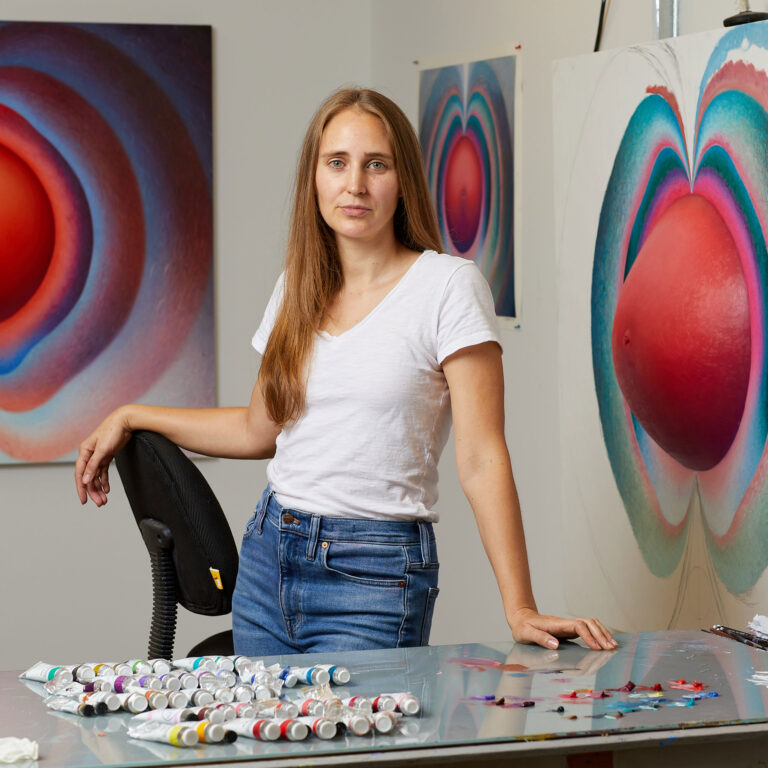
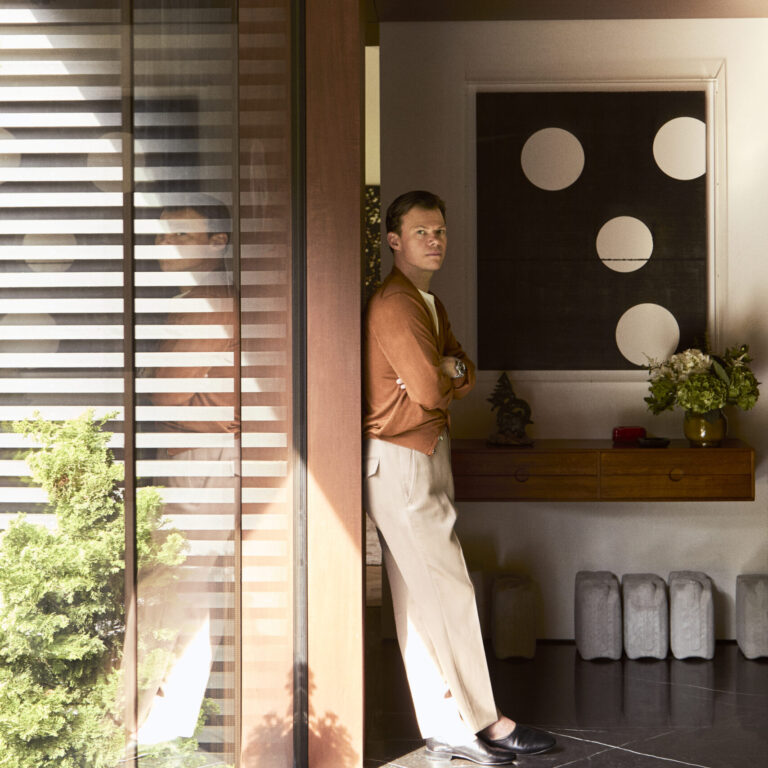

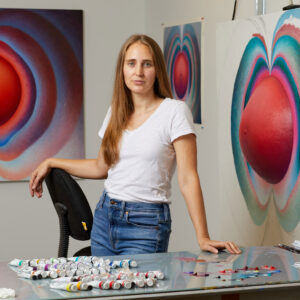
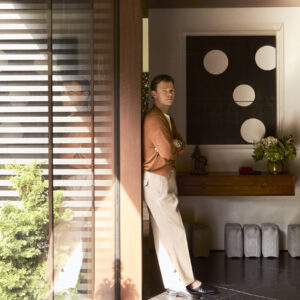


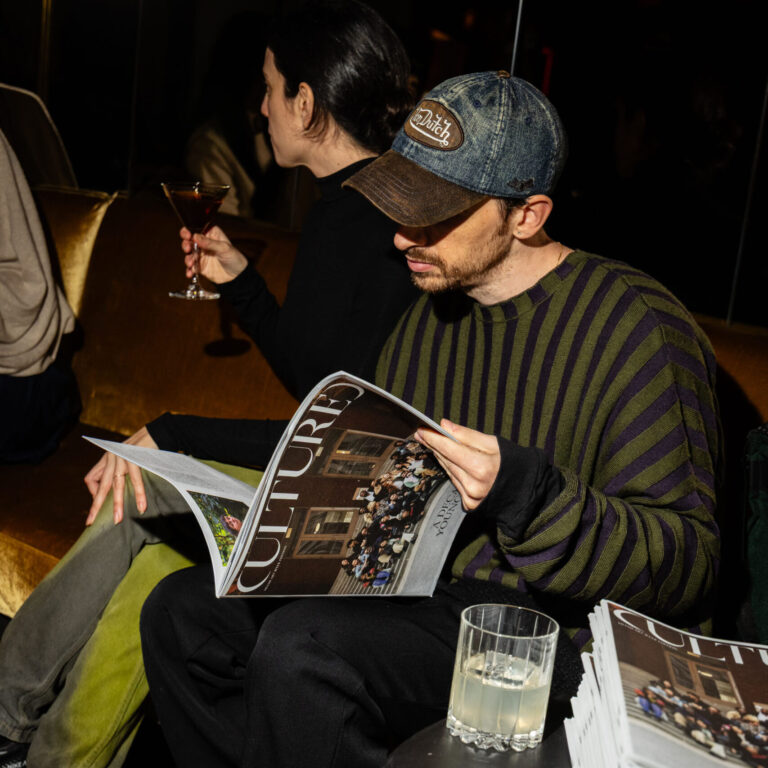

 in your life?
in your life?

